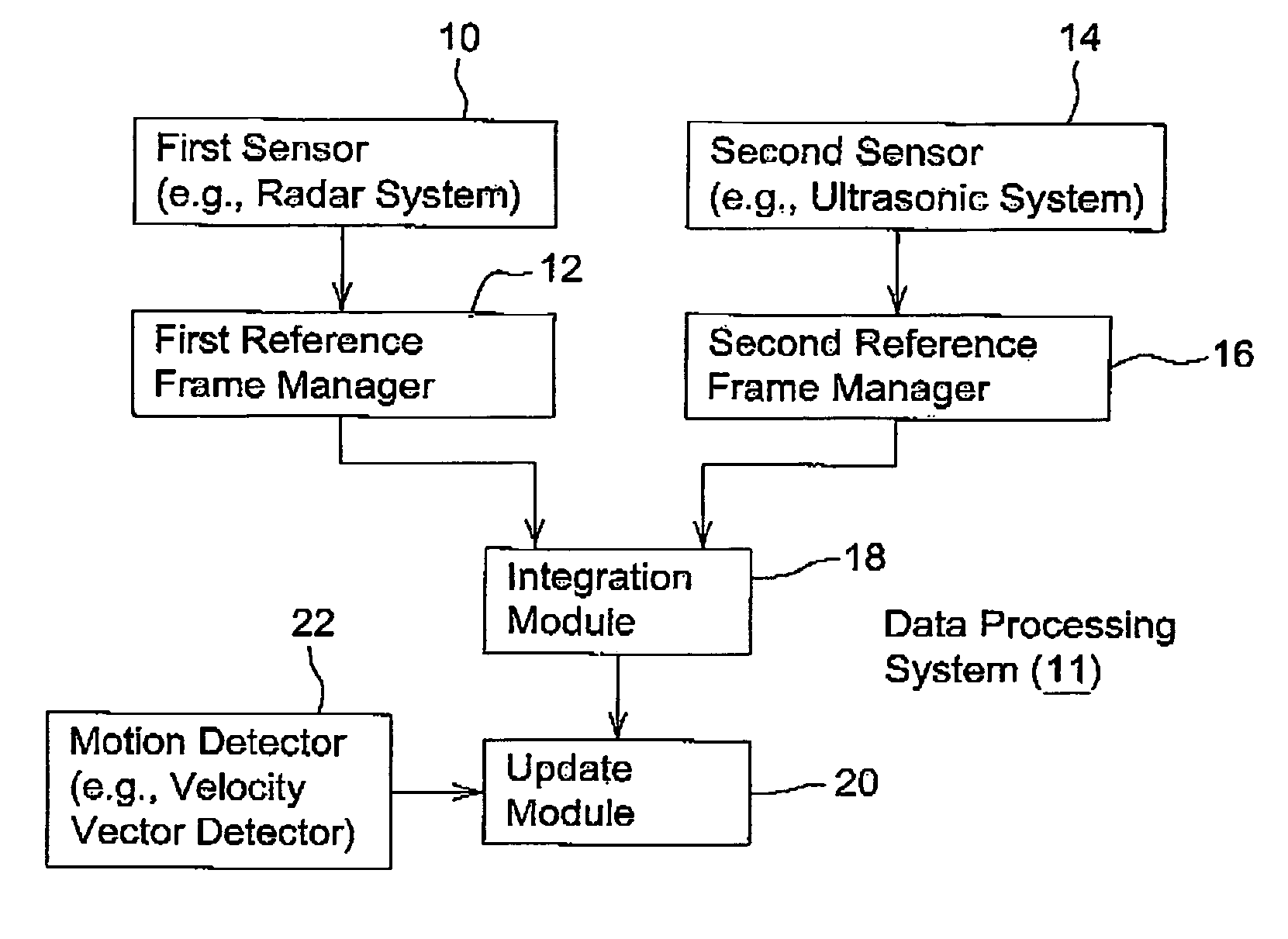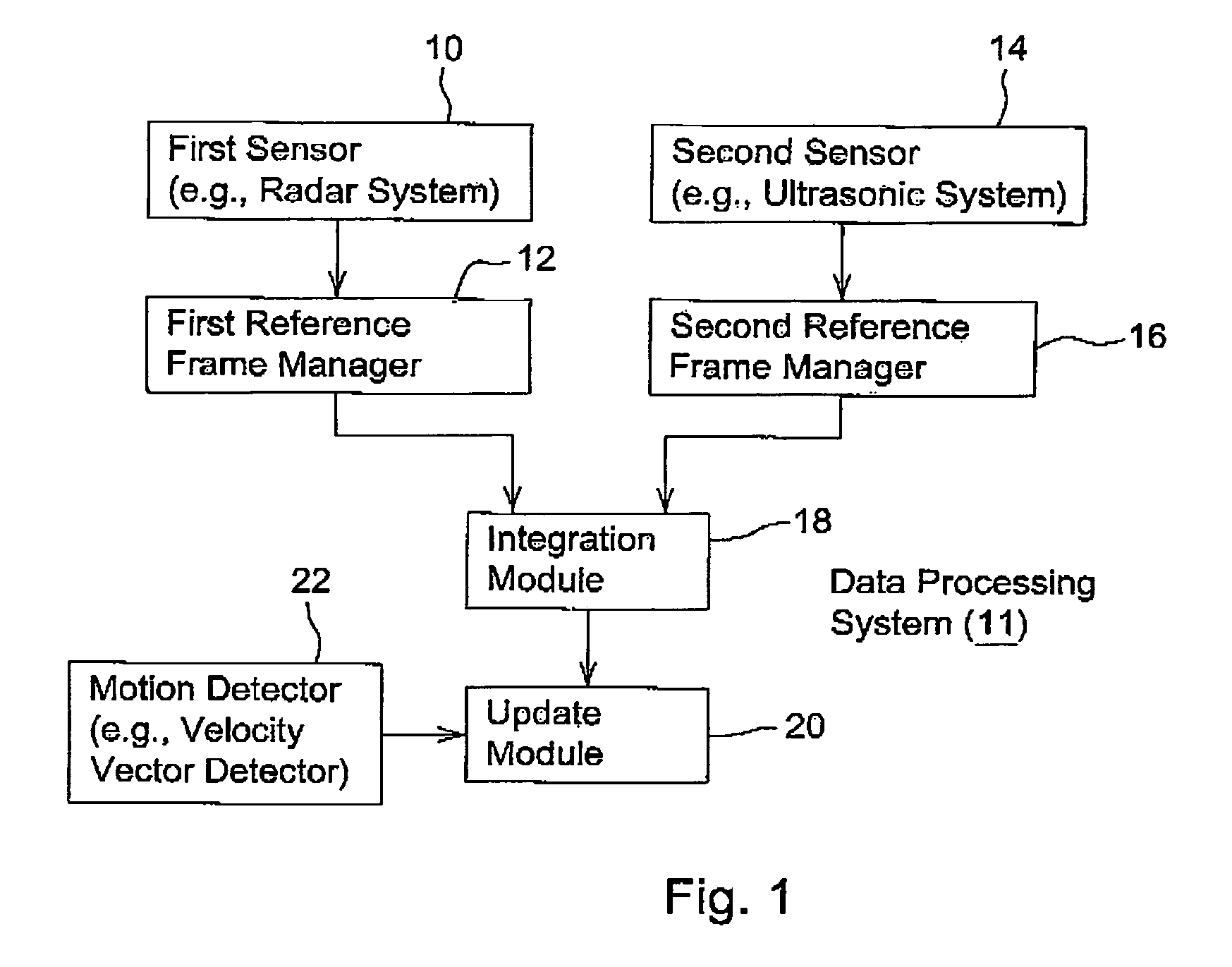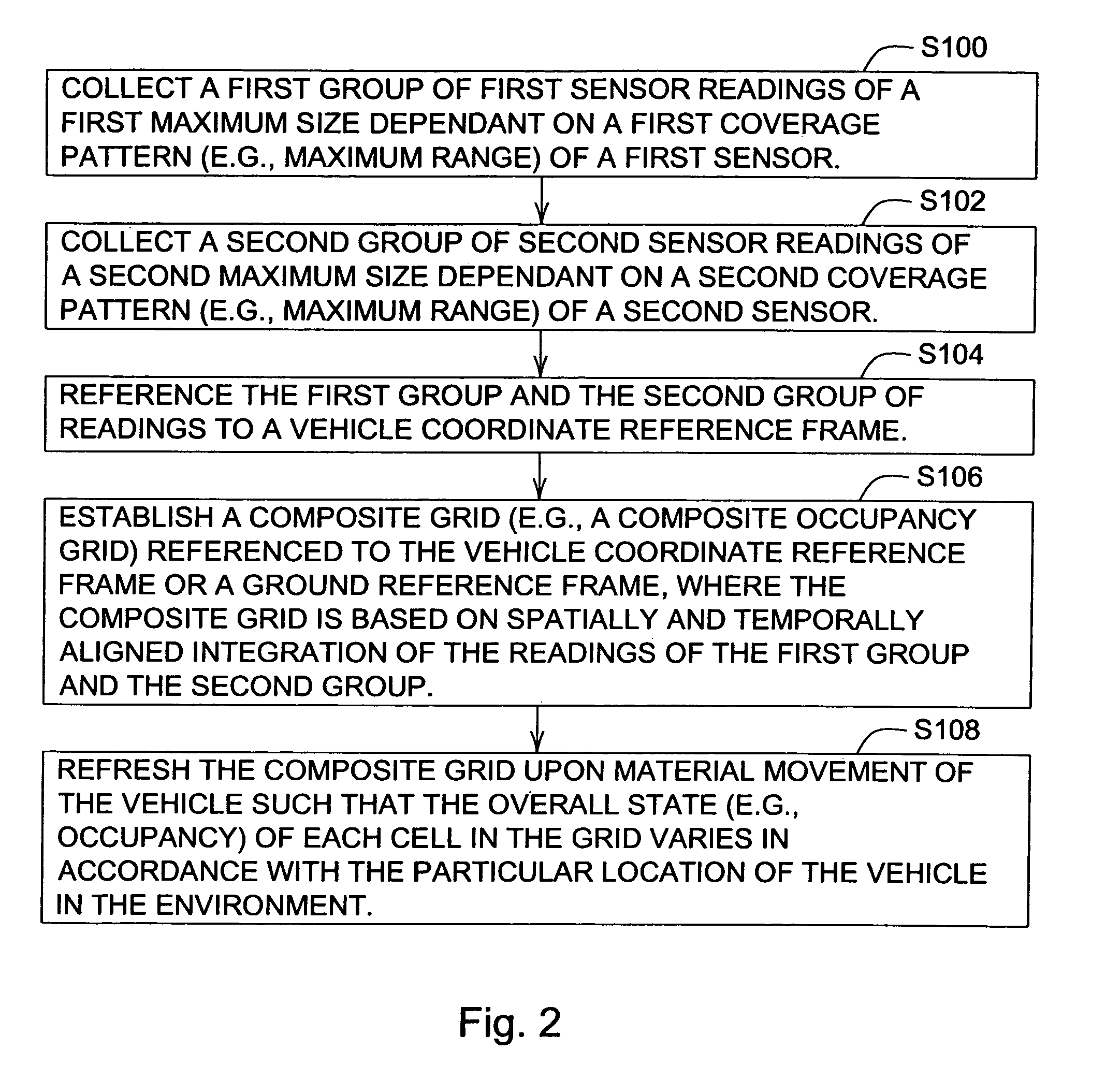Method and system for sensor signal fusion
a sensor signal and signal fusion technology, applied in anti-collision systems, amplifier modifications to reduce noise influence, position fixation, etc., can solve the problems of vehicle wasting additional computational resources, output data may suffer from false positives of the presence of obstacles, and slow down
- Summary
- Abstract
- Description
- Claims
- Application Information
AI Technical Summary
Benefits of technology
Problems solved by technology
Method used
Image
Examples
Embodiment Construction
[0012]In accordance with one embodiment of the invention, the data processing system 11 of FIG. 1 comprises a first sensor 10 coupled to a first reference frame manager 12 and a second sensor 14 coupled to a second reference frame manager 16. In turn, the first reference frame manager 12 communicates to an integration module 18; the second reference frame manager 16 communicates to the integration module 18. The integration module 18 and a motion detector 22 provide input data to an update module 20. The data processing system 11 is associated with or mounted on a vehicle.
[0013]In one illustrative configuration, the first sensor 10 comprises a radar system, whereas the second sensor 14 comprises an ultrasonic system. However, the first sensor 10, the second sensor 14, or both may comprise any suitable distance sensor or range finder. The first sensor 10 and the second sensor 14 each provide a data output or an output signal that is indicative of the distance (e.g., range) between th...
PUM
 Login to View More
Login to View More Abstract
Description
Claims
Application Information
 Login to View More
Login to View More - R&D
- Intellectual Property
- Life Sciences
- Materials
- Tech Scout
- Unparalleled Data Quality
- Higher Quality Content
- 60% Fewer Hallucinations
Browse by: Latest US Patents, China's latest patents, Technical Efficacy Thesaurus, Application Domain, Technology Topic, Popular Technical Reports.
© 2025 PatSnap. All rights reserved.Legal|Privacy policy|Modern Slavery Act Transparency Statement|Sitemap|About US| Contact US: help@patsnap.com



